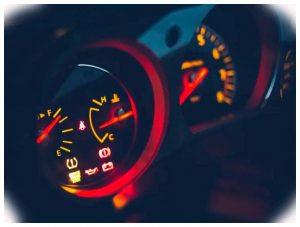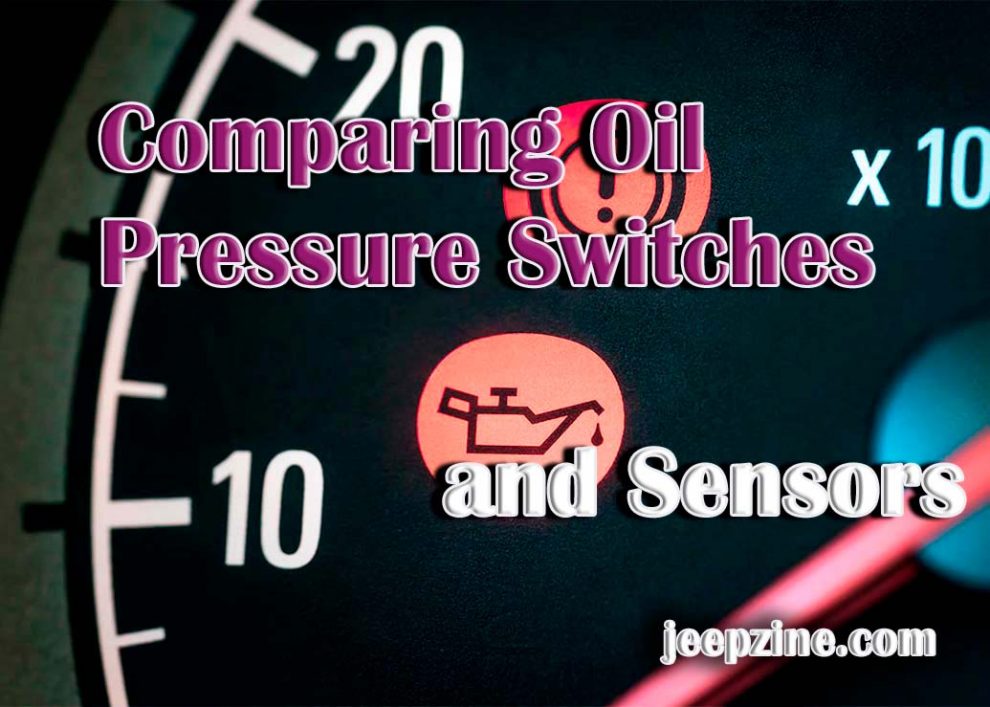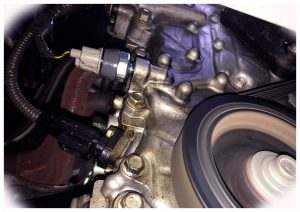Oil pressure switches and sensors are essential components in many vehicles, allowing drivers to monitor the health and performance of their engines. Understanding the difference between these components is important for any DIY car enthusiast. In this article, we’ll compare oil pressure switches and sensors, explain how they work, highlight common issues that may arise with either component and discuss how to fix them.
Function of Oil Pressure Switch and Sensor
Oil Pressure Switch: How it Works

Oil Pressure Sensor: How It Works
The oil pressure sensor works differently than an oil pressure switch because it does not merely activate an alarm when engine oil reaches a certain level—it continuously sends data regarding current engine oil pressure to the vehicle’s onboard computer. This allows the computer to adjust to optimize engine performance and fuel economy. The sensor is connected to an electrical circuit monitored by a microprocessor, allowing it to measure the pressure of oil through its metal diaphragm precisely. Also read how to check engine oil to ensure your vehicle maintains optimal performance and longevity.
Differences Between Oil Pressure Switch and Sensor
Construction and Design
The most significant difference between oil pressure switches and sensors is their construction and design. The oil pressure switch consists of a spring-loaded plunger or diaphragm inside a metal or plastic housing, while the oil pressure sensor uses an electronic circuit with a microprocessor connected to a metal diaphragm that measures engine oil pressure levels in real time.
Operating Principles
Another key difference between these components lies in their operating principles. An oil pressure switch functions like an on/off switch—it only activates when engine oil reaches certain predetermined threshold values set by the manufacturer, while an oil pressure sensor continuously sends data regarding current engine oil levels to the vehicle’s onboard computer so that it can take corrective action if needed.
Diagnostic Capabilities
Finally, there are differences in diagnostic capabilities. An oil pressure switch can only detect whether engine oil is above or below a certain threshold—it cannot identify other issues with the engine. On the other hand, an oil pressure sensor can detect changes in engine oil pressure over time and provide more detailed information about the engine’s health.
Common Issues with Oil Pressure Switches and Sensors
 Symptoms of a Failing Oil Pressure Switch or Sensor
Symptoms of a Failing Oil Pressure Switch or Sensor
When an oil pressure switch or sensor fails, drivers may experience warning lights on their dashboard, low fuel economy, or poor engine performance. This is because either component is important in maintaining optimal lubrication levels within the engine. When one fails, it can lead to decreased performance and increased wear on internal components.
Causes of Oil Pressure Issues
The most common cause of oil pressure issues is a malfunctioning switch or sensor, caused by dirt and debris buildup around them. Other causes could include faulty wiring connections between the component and the vehicle’s onboard computer; damaged O-rings; worn out valves; accumulation of sludge in the system; or leaky gaskets.
Diagnostic Methods
To diagnose issues related to malfunctioning switches or sensors, mechanics will often employ an oscilloscope, pressure gauge, or multimeter to measure current levels of oil pressure. They may also visually inspect the engine and any related components to identify potential problems.
How to Fix Oil Pressure Switch and Sensor Issues
Tools and Equipment Needed
To repair oil pressure switch and sensor issues, mechanics will need a few basic tools and supplies such as a socket set, screwdrivers, wrenches, pliers, rags, and cleaning solvent. In certain cases, they may also require specialized tools such as an oscilloscope or multimeter.
Steps to Fixing Oil Pressure Switch and Sensor Issues
The first step in repairing an oil pressure switch or sensor issue is identifying the problem. Once identified, the mechanic can replace damaged parts with new ones if necessary; clean off dirt or debris from around the component; inspect for faulty wiring connections; and test for leaks in the system. Finally, they should ensure that all components are securely fastened within the engine bay to operate properly.
Tips and Best Practices
When repairing oil pressure switches or sensors, mechanics need to take extra precautions to avoid further damage to the engine. This includes turning off the engine before working on any components, disconnecting the battery, and ensuring that all electrical components are disconnected before starting work.
Conclusion
Oil pressure switches and sensors are essential components in many vehicles—understanding how they work and how to diagnose and fix related issues is essential for any DIY car enthusiast. In this article, we compared oil pressure switches and sensors, covered their functions, discussed common issues that may arise with either component and provided tips for repairing them.


 Symptoms of a Failing Oil Pressure Switch or Sensor
Symptoms of a Failing Oil Pressure Switch or Sensor
Add Comment